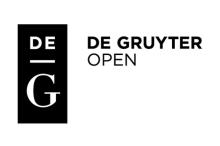Resource information
Soil erosion and contamination are two main desertification indices or land degradation agents in agricultural areas. Global climate change consequence is a priority to predict global environmental change impacts on these degradation risks. This agro-ecological approach can be especially useful when formulating soil specific agricultural practices based on the spatial variability of soils and related resources to reverse environmental degradation. Raizal and Pantanal models within the new MicroLEIS framework, the Ero&Con package, are database/expert system evaluation approach for assessing limitations to land use, or vulnerability of the land to specified agricultural degradation risks. This study was performed in Souma area with approximately 4100 ha extension in the North-West of Iran (west Azarbaijan). Based on 35 sampling soils, Typic Xerofluvents, Typic Calcixerepts, Fluventic Haploxerepts and Fluventic Endaquepts were classified as main subgroups. Climatological data, referred to temperature and precipitation of more than 36 consecutive years were collected from Urmieh station reports and stored in monthly Climate Database CDBm, as a major component of MicroLEIS DSS (CDBm) program. Climate data for a hypothetical future scenario were collected from the Intergovernmental Panel on Climate Change (IPCC) reports for the 2080s period. The evaluation approach predicts that attainable water erosion vulnerability classes were none (V1) very low (V2) and moderately low (V4) in the total of 72%, 13% and 15% of the Souma area, respectively and they will not affected by climate change. On contrary, attainable wind erosion vulnerability classes will increase. Also, phosphorous and heavy metal contamination vulnerability risks will not differ in two compared scenarios while nitrogen and pesticides vulnerability classes will be improved.



